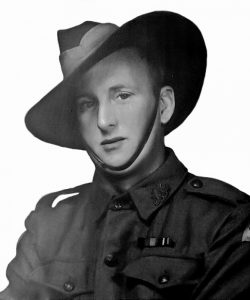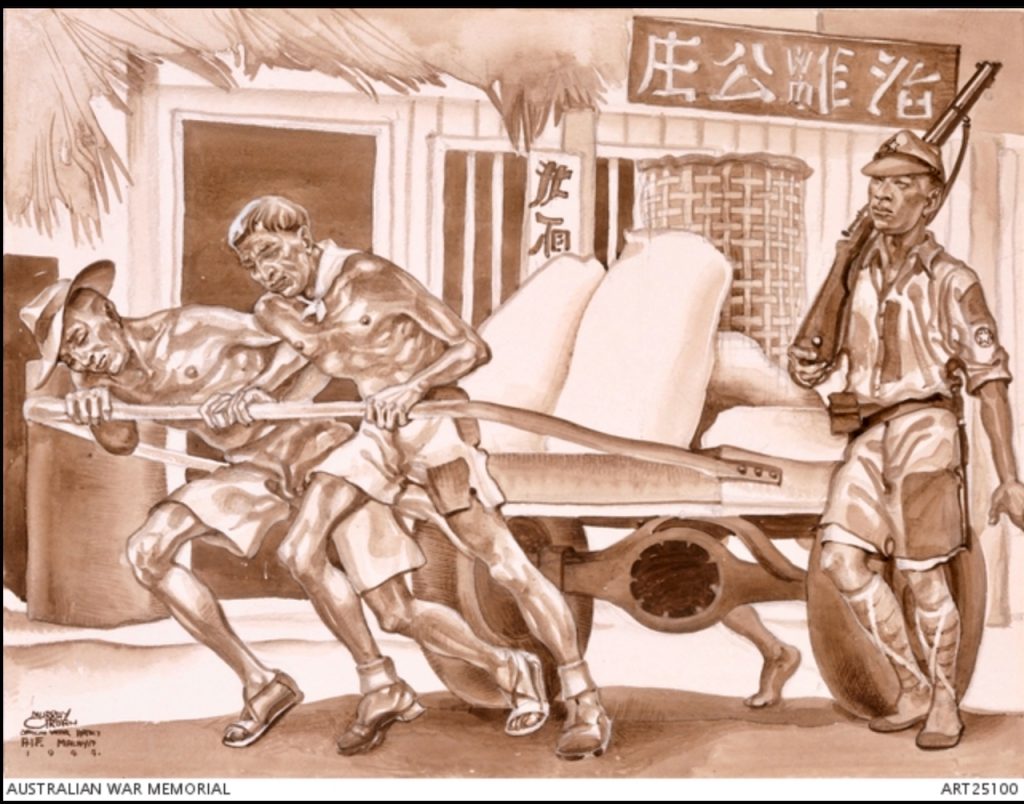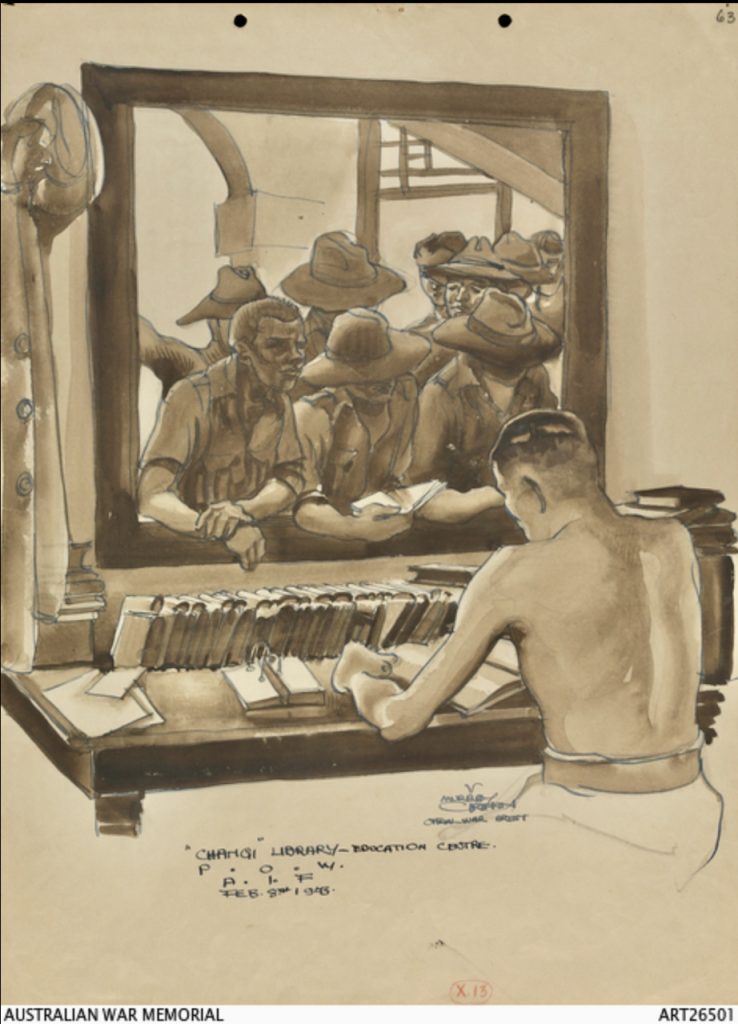Amongst the many tasks that were carried out at Selarang and Changi Gaol Camps the following are of the most significance:
FOREST PARTY
This party collected or felled firewood for the camp kitchens and hospital.
Those POWs we know who worked for Forest Party include:
WX8180 Edward ‘Snow’ Taylor

TRAILER PARTY
The method used to transport the necessities of POW daily life by trailer. Truck and car bodies were stripped of their chassis and replaced with flat platforms. There were as many as 20 men in a party depending on the size and weight of the chassis and the load it was required to carry.
The Japanese guards merely went along for the ride at the helm while the POWs pulled and pushed these wheeled skeletons. It was not as simple and safe as it sounds – there were several serious accidents.

‘This party of prisoners-of-war in Japanese hands in Changi POW Camp, are seen carting coconut tree logs into camp for firewood. The logs have been cut just outside the camp by troops of the Australian Forestry group’. By Murray Griffin
Courtesy AWM.

COCONUT PARTY
This party collected coconuts from local trees. WX8180 Edward ‘Snow’ Taylor was in this party for a time.

SALTWATER PARTY
These POWs collected saltwater from Changi Beach to be boiled for its salt content for cooking and to produce saline solution for the hospital.

Art by Murray Griffin. (We wish to acknowledge the AWM)
‘Working party of men carrying buckets full of water on poles. The prisoners of Changi were required to undertake all chores for their survival within the camp, which meant work parties for water, firewood and everything else were established and men assigned’
- GARDEN CONTROL PARTY
-
Gardens were established at the outset at both Selarang Baracks and Changi Gaol Camp to produce vegetables to supplement the POWs’ rice diet.
-
Amongst the crops were tapioca, sweet potato, spinach, cucumber and sweet corn. Major Colin Cameron and Lt Kevin Boyle were the first to represent the 2/4th. They were allotted ground and tools and soon had 5 acres of tapioca, spinach and sweet potato growing outside the wire at Selarang. They also had a further three acres planted in the house area inside the wire. When Cameron and Boyle left with ‘A’ Force to Burma, Tom Bunning took over as Garden Control Officer.
-
The additional food and nutritional value of the vegetables was vital to men’s survival. Large numbers of POWs toiled in the gardens for the common good. WX12717 Arthur London ASAOC (formerly Chief Engineer, Western Mining Corporation Kalgoorlie) – an engineer by trade, was appointed as drainage engineer. Because he had men working under him he was promoted to rank of T/Sgt on his time with the Garden Party.

- Right: Arthur London
-
With the move to Changi Gaol Camp in 1944 there was an urgency to get the gardens under cultivation as soon as possible. Capt Tom Bunning started on 1 June 1944. He was allocated an area of about 8 acres which was planted with tapioca and other vegetables. The new garden area was known as Tanah Merah.
-
It was apparent the POWs were losing weight quickly. Bunning’s problem was manpower. In 1945 the Japanese were taking away more POWs for work parties, especially for the Tunnelling Parties around Singapore and Johore.
-
In reality the vegetables should have gone to the hospital. There was a very large number of officers at Changi – did the men receive any benefits from the gardens?

Above: Interior of a cookhouse showing emaciated men stirring rice soaking in enamel baths, with other men carrying heavy iron pans filled with rice. Courtesy of IWM.

Liberated 8th Division men at the Changi prisoner of war (POW) camp in Singapore carrying rice from the mess. Their tin gives an indication of the limited rations supplied to 250 men.
CONCERT PARTY

A large crowd is entertained by a concert party at Changi. Picture Australian War Memorial, P03821.015

The cast and orchestra of a concert performed by Australian prisoners of war. Picture Australian War Memorial, P01433.011
CHANGI LIBRARY

